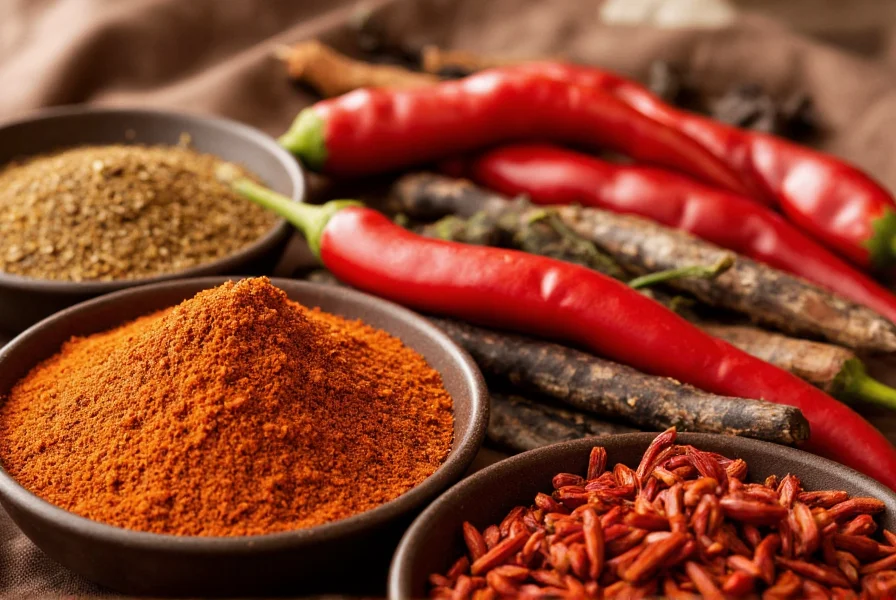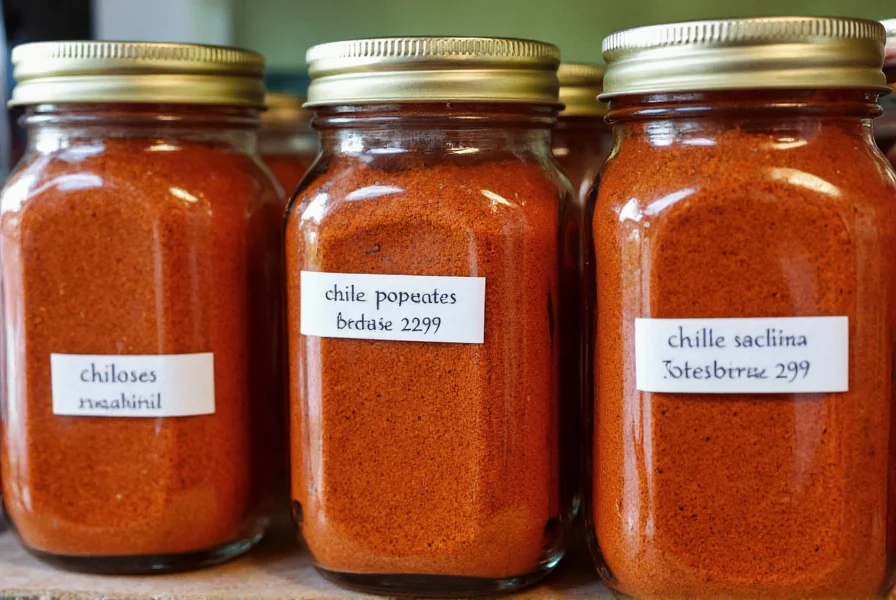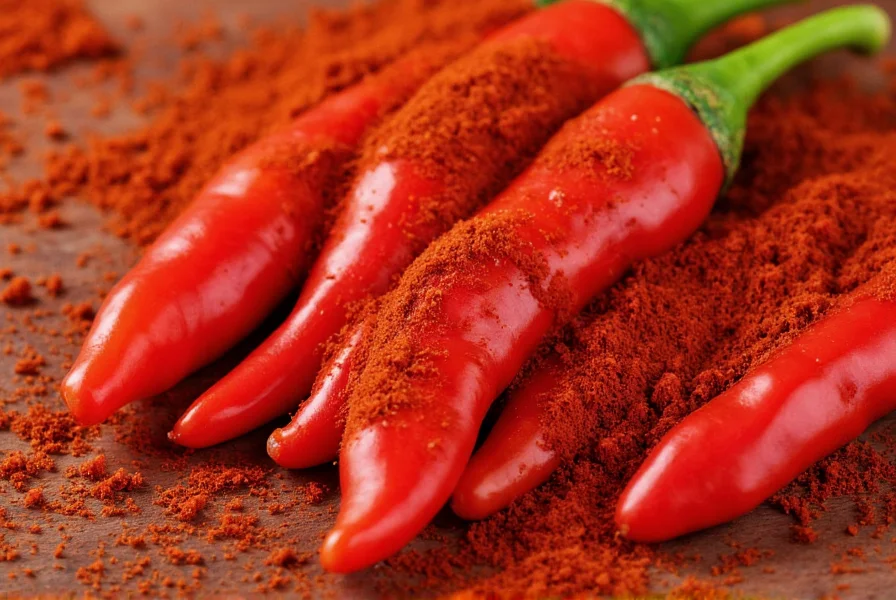Understanding chili spice goes beyond recognizing it as merely a hot seasoning. This culinary staple has evolved through cultural exchanges, particularly along the historic spice routes connecting Central America with global kitchens. The foundation of most chili spice blends begins with dried Capsicum peppers, but the magic happens through the careful balance of additional ingredients that transform simple heat into multidimensional flavor.
What Exactly Constitutes Chili Spice?
While many use "chili powder" and "chili spice" interchangeably, they're distinct products. Pure chili powder contains only ground dried chilies, whereas chili spice represents a thoughtfully crafted blend. Traditional chili spice formulations typically include:
- Base chili peppers (ancho, cayenne, or chipotle)
- Ground cumin for earthy depth
- Garlic powder for savory notes
- Onion powder for sweetness
- Oregano (particularly Mexican oregano) for herbal complexity
- Salt for flavor enhancement
- Paprika for color and mild sweetness
The precise ratios determine whether a blend leans toward authentic Texan chili powder (minimal additions) or commercial chili spice (more complex seasoning). Regional variations exist across the American Southwest, with New Mexico formulations emphasizing local chilies while Texas versions often contain more cumin.
| Component | Primary Function | Common Varieties |
|---|---|---|
| Chili Peppers | Heat and base flavor | Ancho, Cayenne, Chipotle, Guajillo |
| Cumin | Earthy depth | Ground cumin seed |
| Garlic Powder | Savory umami | Fine granulated |
| Mexican Oregano | Herbal complexity | Lippia graveolens |
Regional Variations of Chili Spice Blends
Chili spice isn't monolithic—different regions have developed signature blends reflecting local tastes and available ingredients. Understanding these variations helps cooks select or create the perfect blend for specific dishes.
Texas-Style Chili Spice remains closest to the original concept of chili powder, featuring primarily dried chilies with minimal additions. Authentic Texas blends often contain only ancho and cayenne peppers with a touch of cumin, honoring the state's chili con carne tradition where the meat and chilies shine without competing flavors.
New Mexico Blend incorporates locally grown chilies like Hatch and Chimayó, creating a distinctive flavor profile with moderate heat and pronounced fruitiness. These blends often include toasted cumin and a hint of oregano, reflecting the region's agricultural heritage.
Commercial Chili Spice found in most supermarkets contains additional ingredients like cornstarch (as an anti-caking agent), sugar, and sometimes fillers. While convenient, these blends often lack the depth of artisanal versions. Savvy cooks seeking authentic homemade chili spice recipe can achieve superior results with fresh ingredients.

Practical Applications in Cooking
Mastering chili spice usage transforms ordinary dishes into culinary experiences. The timing of addition significantly impacts flavor development:
For dry rubs, combine chili spice with salt and massage into meats before grilling or smoking. The spices adhere to the surface, creating a flavorful crust while the interior remains tender. This technique works exceptionally well for chili spice rubbed chicken thighs or beef brisket.
When building liquid-based dishes like chili con carne or stews, bloom the chili spice in hot oil before adding liquids. This crucial step—called "toasting"—releases essential oils and deepens flavors. Add the spice blend to your pot with a tablespoon of oil, stirring constantly for 30-60 seconds until fragrant before incorporating other ingredients.
For vegetable dishes, toss roasted vegetables with chili spice during the last five minutes of cooking. This preserves the volatile compounds responsible for complex flavors that can dissipate with prolonged heat exposure. Sweet potatoes, cauliflower, and carrots particularly benefit from this treatment.
Understanding Heat Levels and Measurement
The Scoville scale measures chili heat, but practical cooking requires understanding how different components affect perceived spiciness. While pure capsaicin ranks at 16 million Scoville Heat Units (SHU), most chili spice blends range between 500-2,500 SHU depending on formulation.
Several factors influence heat perception in chili spice:
- Fat content of the dish (fat dissolves capsaicin, spreading heat)
- Sugar content (counteracts perceived heat)
- Acidity (can intensify heat sensation)
- Temperature (hotter foods feel spicier)
When adjusting heat levels in recipes, remember that commercial chili spice blends vary significantly between brands. For consistent results in authentic chili con carne preparation, consider making your own blend where you control the heat profile.
Proper Storage and Shelf Life
Like all ground spices, chili spice degrades over time, losing both flavor and heat intensity. Proper storage extends its useful life while maintaining quality.
Store chili spice in an airtight container away from light, heat, and moisture. A dark cupboard works better than refrigerator storage, which introduces moisture that degrades quality. For longest shelf life, purchase whole chilies and grind them as needed—this preserves volatile compounds that create complex flavors.
Signs your chili spice has degraded include:
- Faded color (should be vibrant red)
- Weak aroma (fresh blend should smell robustly spicy)
- Lack of heat sensation when tasted
- Clumping (indicates moisture exposure)
Most commercial chili spice maintains peak quality for 6-12 months, while homemade versions last 3-6 months. For optimal flavor in traditional Mexican mole recipes, use freshly made blends whenever possible.

Substitutions and Alternatives
When chili spice isn't available, several alternatives work depending on your recipe's requirements. Understanding these substitutions prevents cooking disasters while maintaining flavor integrity.
For Tex-Mex dishes, combine equal parts paprika, cumin, and garlic powder with a pinch of cayenne. This approximation captures the essential flavor profile without specialty ingredients. Add a touch of oregano for more authentic chili spice flavor profile in enchilada sauces.
Cooks needing heat without complex seasoning can use pure cayenne pepper diluted with paprika (1 part cayenne to 3 parts paprika). This maintains heat level while providing color and mild flavor.
For gluten-free or anti-caking concerns, make your own blend using freshly ground chilies and spices. Commercial blends sometimes contain flour or starch as anti-caking agents, which can affect texture in sensitive recipes.
Common Questions About Chili Spice
What's the difference between chili powder and chili spice?
Chili powder typically refers to a single-ingredient product made from ground dried chilies, while chili spice is a blend containing chili peppers plus additional seasonings like cumin, garlic powder, and oregano. Commercial products often use these terms interchangeably, causing confusion.
Can I substitute paprika for chili spice in recipes?
Paprika alone makes an inadequate substitute as it lacks the complexity of chili spice. For better results, combine 2 parts paprika with 1 part cumin, 1/2 part garlic powder, and a pinch of cayenne to approximate chili spice flavor in dishes like chili con carne or taco seasoning.
Why does my homemade chili lack depth compared to restaurant versions?
Restaurant-quality chili often uses toasted whole spices ground fresh, rather than pre-made chili spice blends. Bloom your spices in oil before adding liquids, use multiple chili varieties, and include umami boosters like tomato paste or coffee to achieve that professional depth in your authentic homemade chili recipe.
How can I reduce the heat level of chili spice without losing flavor?
To moderate heat while preserving flavor, blend your chili spice with additional sweet paprika or add acid (like lime juice) which counteracts perceived heat. Dairy products like yogurt or sour cream provide immediate heat relief when serving, without altering the cooking process.
Does chili spice expire, and how can I tell if it's gone bad?
Chili spice loses potency over time but doesn't technically expire. Signs of degradation include faded color (should be vibrant red), weak aroma, and diminished heat. Properly stored in an airtight container away from light, it maintains quality for 6-12 months. Clumping indicates moisture exposure, which accelerates flavor loss.











 浙公网安备
33010002000092号
浙公网安备
33010002000092号 浙B2-20120091-4
浙B2-20120091-4